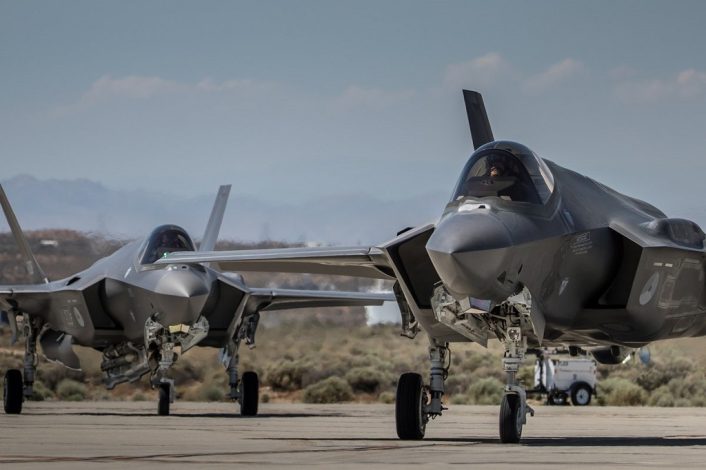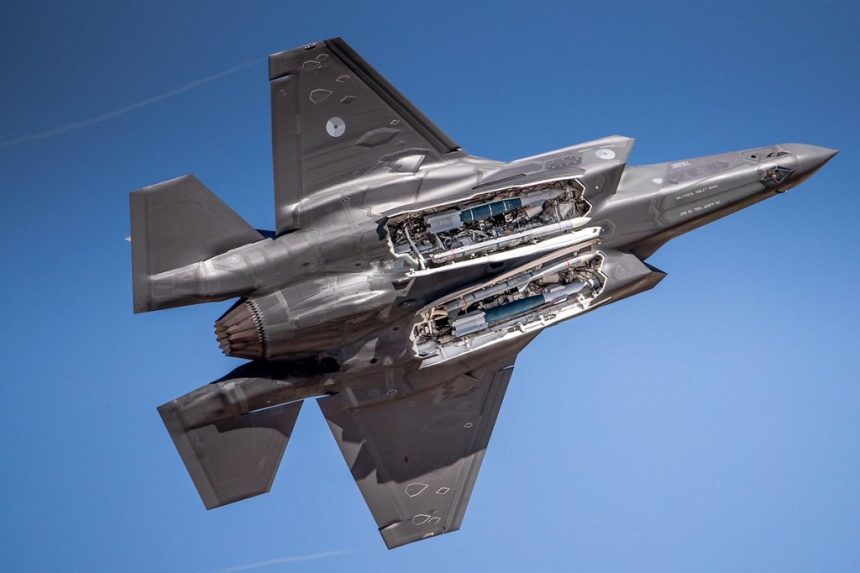The jets flew from the U.S. to Vlieland Bombing Range in Netherlands, struck their target and landed at Volkel Air Base to take part in Dutch Air Force Days 2019
On June 13, 2019 two F-35As from the Royal Netherlands Air Force, belonging to the 323 Test and Evaluation Squadron, performed a surprise attack on Vlieland Bombing Range at the end of a 9,000 kilometers trans-oceanic flight. The mission, called Rapid Reaction Test, initially contemplated a direct flight from Edwards AFB, where the squadron is based, to the Netherlands on June 12 but, due to problems with the refueling system of the KDC-10 fuel tanker, the jets had to land in Goose Bay (Canada) and wait for another tanker from Europe.
This test, part of the operational testing and evaluation phase, is aimed to verify the F-35’s ability to leave its home base and perform a surprise attack at great distance with short notice and minimal support, similar to the Rapid Raptor concept developed by the U.S. Air Force. As stated by RNLAF officials: “The approach of Rapid Reaction Deployment is that a number of F-35s can be deployed within 24 hours, self-supporting, flexible and worldwide to carry out missions, with support from tanker and transport devices. This can be carried out in an environment with a high threat, day and night and in all weather conditions. The collaboration with Special Forces is likely in that context. The aim is also to recognize all possibilities of deployment of the F-35 that may be important for the performance of Special Operations Forces.”
All the logistical needs for the duration of the deployment were provided by just one C-17: ”We have chosen to go out with the absolute minimum. We are eighteen people, the people you need for maintenance, arming and possibly some minor repairs. We also do not include our entire stock of spare parts. You are talking about tires, oil and weapons at this time. Everything and everyone fits in an American C-17 transport plane”, said Major Pascal “Smiley” Smaal.
On Thursday’s evening, the F-35s finally released two inert GBU-49s Enhanced Paveway II dual laser-GPS guided bomb and two inert GBU-12 Paveway II laser guided bomb on Vlieland range. The target, specially built for this test, consisted in three stacked shipping containers and was designated by Joint Terminal Air Controllers (JTACs) from Dutch special forces, to simulate a real attack as closely as possible. The use of laser designators and a digital information packet sent through datalink made possible to the pilots to hit their target in adverse weather and without the need of radio communications.

After eight hours of flight the F-35s, coded F-001 and F-008, landed at Volkel Air Base, where they took part in the Dutch Air Force Days 2019 on June 14 and 15 with both static and flying displays. Interestingly, the jet coded F-001 sported a special tail for the 70th anniversary of the 323 Test and Evaluation Squadron.
This is how the most stunning F-35 tail in the world looks like. RNLAF F-35A F-001 received special markings to commemorate the 70th anniversary of 323 TES. This aircraft is currently at the RNLAF open house but will soon fly back to Edwards AFB. @Kon_Luchtmacht @BertdeSmit pic.twitter.com/xGcMvN4tq7
— Frank Crebas (@FrankCrebas) June 15, 2019









